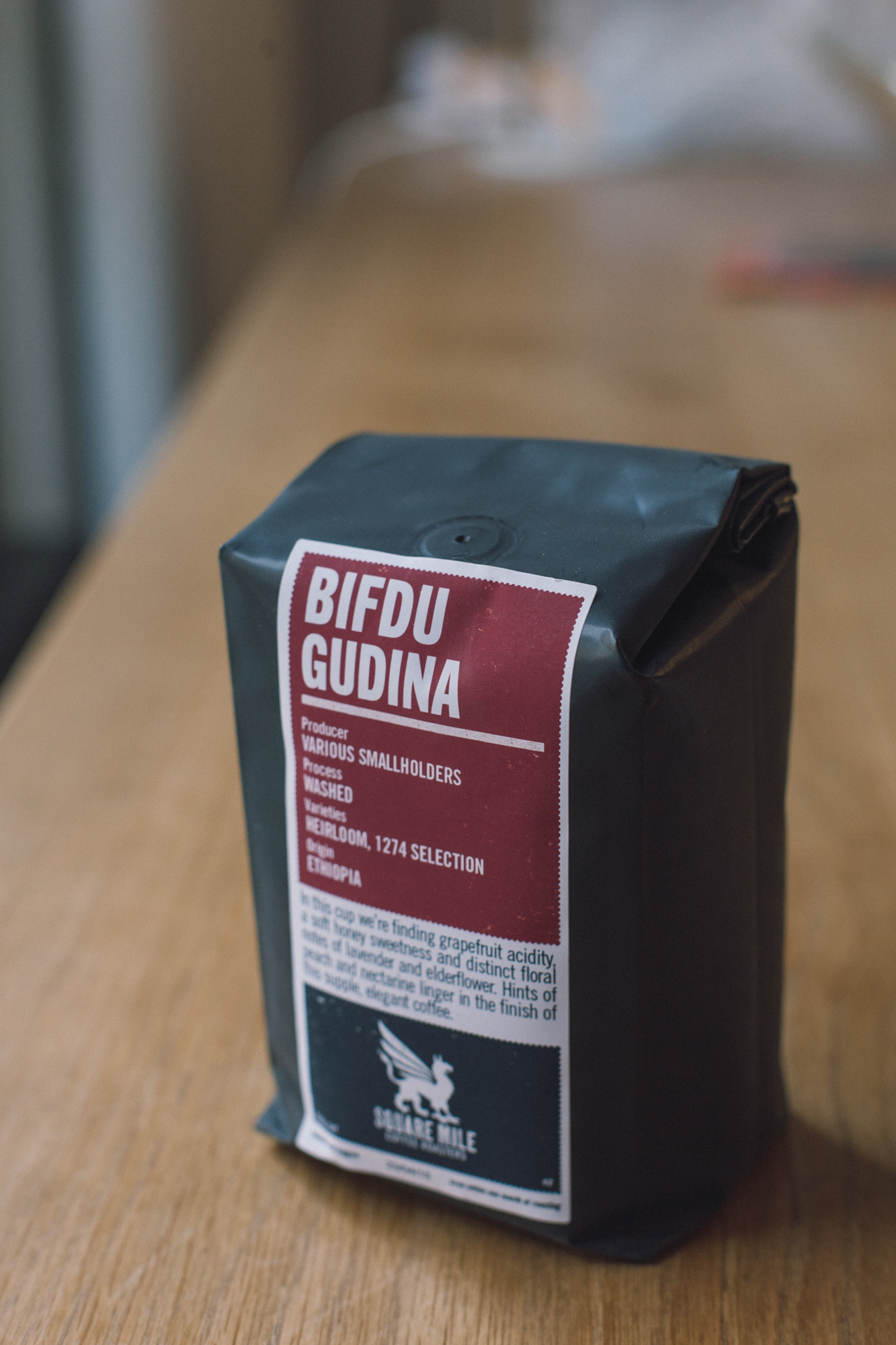Ice Ice Baby – A closer look at brewing cold coffee
By Kalle Freese
It’s that time of the year when we start to see cold coffee drinks appear on the menus around the Northern hemisphere. From Tokyo to San Francisco, espresso tonics, shakeratos, iced cappuccinos and 'America’s best iced lattes' are filling my Instagram feed. These are the real world signature drinks: innovative, great looking and often pretty tasty (caramel frappuccino guilty pleasure, anyone?)
If you’re a barista like me — and you probably are, since you’re reading an article on Barista Guild of Europe’s website — there’s a fairly high chance that you prefer your coffee brewed as filter and served black. But when the summer heat gets intense, I like my coffee cold. Unfortunately, this makes things tricky. Serving cold black coffee that would be equally or more delicious than its hot version is, to say the least, a challenge. Why? Because of chemistry — and whether you like it or not, that’s what making coffee is all about.
As we know, brewing coffee involves two ingredients: coffee and water. In terms of chemistry, coffee is the solute that we want to extract in water, the solvent. Grinding beans expands their surface area exponentially and speeds up the extraction process dramatically — the finer, the quicker. Normally, we brew coffee with hot water because it’s a much more effective solvent than water at room temperature: it does a better job at pulling flavours out of the grounds. The amount extracted is the extraction yield and basically tells us how efficiently we’ve used the grounds: a 20% extraction means that 100g of ground coffee will only weigh 80g after being brewed and dried. For most coffees, around 20% extraction is the sweet spot for acidity, sweetness, body and balance. If you want to learn more about extraction you should visit Matt Perger’s excellent website Barista Hustle.
Brewing cold coffee
In this month’s Learning Project we take a look into three different ways of making cold coffee: cold brewing, brew over ice and brewed hot, then cooled down.
Cold brew
Out of these three methods cold brewing is the most straightforward: steeping ground coffee in water for 12-24 hours either in room temperature or cooler. Often the idea is to produce a smooth, concentrated, and less acidic brew that’s diluted afterwards.
However, there are a few issues. For water at 93 ºC it takes less than five minutes to hit the 20% extraction mark whereas water at 19 ºC has a much lower extraction potential. Brewing takes a lot longer and it’s practically impossible to extract the coffee well.
The long brew time also creates another problem: oxidation of fats and oils. To put it short, these reactions produce funky, rather gnarly, rancid flavours that are present in the vast majority of cold brews that I’ve tasted. Oxidation happens slower in lower temperatures and in anaerobic, oxygen-free environments — like a completely filled container with a tight fitting lid.
Japanese iced coffee
Another way of making cold coffee is the Japanese iced coffee. The idea here is to replace 20-40% of the brew water with ice and brew the coffee straight over it. The ice melts, cools the coffee rapidly and dilutes the brew to intended strength or TDS — Total Dissolved Solids. This is the actual amount of coffee particles in the cup, stuff that makes it taste good and look brown. I like my filter coffee around 1,4% TDS, meaning that 98,6% of the cup is water and the 1,4% is coffee.
This is a great method if you have an ice machine on hand but still has its weaknesses. Extracting the coffee well is more difficult with less brew water. An example. I like to use 60g of coffee per 1000g of water, aiming for a 20% extraction. If I replace 30% of this brew water with ice I only have 700g of brew water but still 60g of coffee. The smaller amount of brew water has to work 43% more efficiently to get the same amount — 20% by weight — extracted from the grounds, meaning that I have to grind quite a bit finer. With some lighter roasted, less soluble coffees achieving 20% this way is tough business.
Brew hot, cool down
After brewing, measuring and tasting all three methods I settled with the last method as my favourite: coffee brewed normally with hot water and then rapidly cooled down without dilution from ice.
Experiment Results
The motivation of this little experiment was just to illustrate the differences between the various methods and their effect on the flavour. This is by no means anywhere close to scientific and indeed requires more experimentations.
The same coffee and water was used for all of these experiments: Ethiopian Bifdu Gudina from Square Mile Coffee, roasted 10 days before.
Looking at the extractions in Table 1 it’s clear that the cold brew extracted a lot less — in fact 15,4 % less. Flavor-wise the difference is clear: the diluted cold brew version tasted slightly sour, flat, a little bit sweet and oxidized. A harsh way to put it would be “generic coffee taste”.
The Japanese method produces noticeably better results: more sweetness and acidity, nice complexity and aroma. Nonetheless, the last one was my favorite with great complexity, body, sweetness and acidity — pretty much everything I enjoy in a great filter brew but cold.
When considering which method to use in a cafe environment, we should also look at the economic side. All the samples were diluted to the same strength of 1,4% TDS using ice in the case of Japanese method and cold water for cold brew. The wholesale price for a great coffee in Finland would be around 24 euro per kilo. By using this as the reference price, I calculated the ingredient costs of a diluted portion.
As you can see in Table 2, a serving of cold brew at €0,56 is almost 65% more expensive than a serving of the two others at €0,34. By extracting more, we can use less coffee to achieve the same strength. This has considerable economic value for a cafe possibly serving a decent amount of coffees over the peak season.









Recipe
Now let's have a look at the recipe of my favourite cold coffee method.
Ingredients:
60g coffee
1000g water
25g white or brown sugar, depending on preference
3g apple cider vinegar
This method works best with a fairly lightly roasted Ethiopian or Kenyan coffee — they also happen to be in season at this time of the year.
Use 60-65g coffee to 1000g/1L water. You should be aiming for 20-22% extraction and 1,35-1,5% TDS.
Brew your coffee just as you normally would. You can use immersion brewer like Aeropress or French press but I think this method works best as drip coffee because of the clarity and cleaner mouthfeel.
Once the coffee has brewed, add 25g of sugar straight into the brew and stir until the sugar has dissolved. This might feel like cheating, but even a well-extracted coffee becomes more bitter when cooled down. A small amount of sugar helps masking this bitterness and increases the body — remember that the sweetness decreases when the coffee is cooled down. 25g is a good starting point but feel free to add more. Adding sugar to the hot brew helps to dissolve it.
Add 3g of the apple cider vinegar and stir again. This might sounds odd at first but the vinegar enhances the acidity, balances the sweetness, and makes the whole drink more complex and refreshing.
Carefully pour the coffee in a clean airtight bottle. Fill the bottle all the way up to the brim and close the cap. Put the bottle in a container filled with ice and water. Alternatively, cool the bottle rapidly under cold tap water.
As the coffee cools, it shrinks in volume. With the airtight cap closed this creates a vacuum in the bottle, effectively making sure there’s little to none oxygen left in the bottle, dramatically prolonging the shelf life of the coffee.
Transfer the bottle to fridge to cool down completely or serve right away if cooled on ice. The bottle should make a pleasing “blop” sound when opened. Check the flavour before serving and adjust the sugar and vinegar according to flavour.
The coffee stays great up to five days in an unopened bottle. After opening it should be served the same day. Sealing again with a vacuum wine saver cap helps a bit.
Serve in a wine glass without ice.
What is your preferred method?
Thanks, Kalle, for giving us this overview of prevailing methods for cold coffee and putting them to a personal test! Do you have a favourite method? Have you done some testing of your own? Or do you know some other interesting articles about cold coffee, its methods, taste profiles and the science behind the extractions? We'd love to hear about it! Please share them in the comments below — we'll update you next month with a summary of the best further reading and further learning bits!


